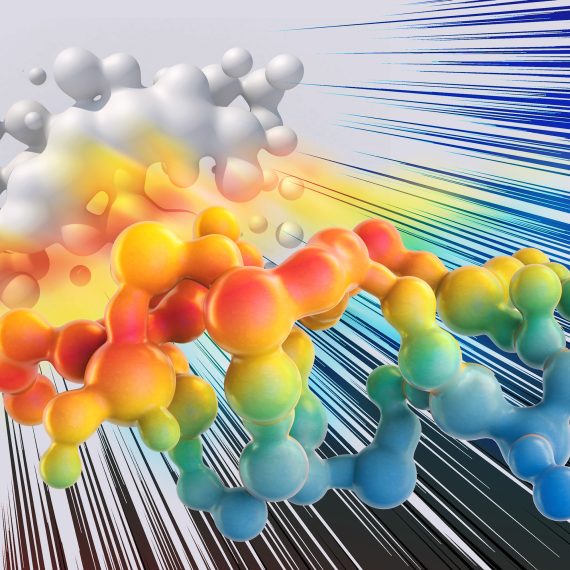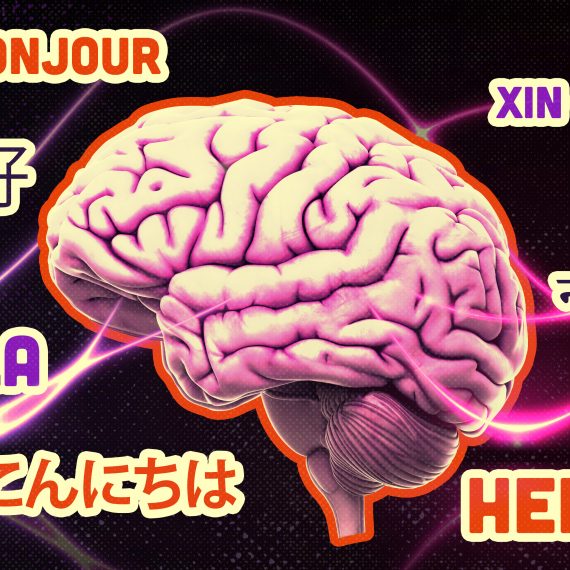Tracking down changes in ADHD
A new study co-authored by McGovern researcher Michael Halassa separates changes in high- and low-level brain functions in ADHD.

Attention deficit hyperactivity disorder (ADHD) is marked by difficulty maintaining focus on tasks, and increased activity and impulsivity. These symptoms ultimately interfere with the ability to learn and function in daily tasks, but the source of the problem could lie at different levels of brain function, and it is hard to parse out exactly what is going wrong.
A new study co-authored by McGovern Institute Associate Investigator Michael Halassa has managed to develop tasks that dissociate lower from higher level brain functions so that disruption to these processes can be more specifically checked in ADHD. The results of this study, carried out in collaboration with co-corresponding authors Wei Ji Ma, Andra Mihali and researchers from New York University, illuminate how brain function is disrupted in ADHD, and highlights a role for perceptual deficits in this condition.
The underlying deficit in ADHD has largely been attributed to executive function — higher order processing and the ability of the brain to integrate information and focus attention. But there have been some hints, largely through reports from those with ADHD, that the very ability to accurately receive sensory information, might be altered. Some people with ADHD, for example, have reported impaired visual function and even changes in color processing. Cleanly separating these perceptual brain functions from the impact of higher order cognitive processes has proven difficult, however. It is not clear whether people with and without ADHD encode visual signals received by the eye in the same way.
“We realized that psychiatric diagnoses in general are based on clinical criteria and patient self-reporting,” says Halassa, who is also a board certified psychiatrist and an assistant professor in MIT’s Department of Brain and Cognitive Sciences. “Psychiatric diagnoses are imprecise, but neurobiology is progressing to the point where we can use well-controlled parameters to standardize criteria, and relate disorders to circuits,” he explains. “If there are problems with attention, is it the spotlight of attention itself that’s affected in ADHD, or the ability of a person to control where this spotlight is focused?”
To test how people with and without ADHD encode visual signals in the brain, Halassa, Ma, Mihali, and collaborators devised a perceptual encoding task in which subjects were asked to provide answers to simple questions about the orientation and color of lines and shapes on a screen. The simplicity of this test aimed to remove high-level cognitive input and provide a measure of accurate perceptual coding.
To measure higher-level executive function, the researchers provided subjects with rules about which features and screen areas were relevant to the task, and they switched relevance throughout the test. They monitored whether subjects cognitively adapted to the switch in rules – an indication of higher-order brain function. The authors also analyzed psychometric curve parameters, common in psychophysics, but not yet applied to ADHD.
“These psychometric parameters give us specific information about the parts of sensory processing that are being affected,” explains Halassa. “So, if you were to put on sunglasses, that would shift threshold, indicating that input is being affected, but this wouldn’t necessarily affect the slope of the psychometric function. If the slope is affected, this starts to reflect difficulty in seeing a line or color. In other words, these tests give us a finer readout of behavior, and how to map this onto particular circuits.”
The authors found that changes in visual perception were robustly associated with ADHD, and these changes were also correlated with cognitive function. Individuals with more clinically severe ADHD scored lower on executive function, and basic perception also tracked with these clinical records of disease severity. The authors could even sort ADHD from control subjects, based on their perceptual variability alone. All of this goes to say that changes in perception itself are clearly present in this ADHD cohort, and that they decline alongside changes in executive function.
“This was unexpected,” points out Halassa. “We didn’t expect so much to be explained by lower sensitivity to stimuli, and to see that these tasks become harder as cognitive pressure increases. It wasn’t clear that cognitive circuits might influence processing of stimuli.”
Understanding the true basis of changes in behavior in disorders such as ADHD can be hard to tease apart, but the study gives more insight into changes in the ADHD brain, and supports the idea that quantitative follow up on self-reporting by patients can drive a stronger understanding — and possible targeted treatment — of such disorders. Testing a larger number of ADHD patients and validating these measures on a larger scale is now the next research priority.




